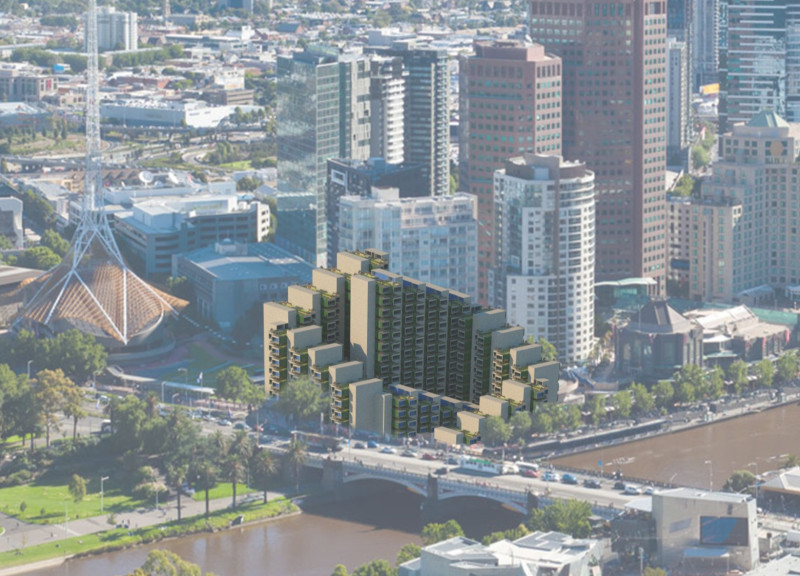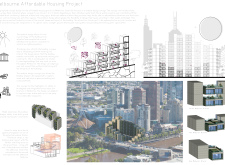5 key facts about this project
The Melbourne Affordable Housing Project offers a fresh approach to addressing the need for adaptable and affordable housing in an urban context. Set in Melbourne, Australia, the project aims to provide flexible living arrangements that cater to diverse needs. The design resembles a formation of LEGO blocks, allowing residents to choose between one to three units, each serving as a complete living space with necessary amenities.
Modular Design Concept
The design focuses on a modular system, enabling customization of living spaces based on individual preferences. Each block functions as a standalone room, including a bedroom, kitchen, and living area. This setup promotes efficient use of space and allows for easy expansion as household needs change. Residents can easily reconfigure their living environments to match their evolving requirements.
Integration with Site Context
A significant aspect of the project is its integration with the surrounding site. The modular units can adapt to different landscapes, ensuring that the natural environment is respected and preserved. This flexibility allows for optimal use of natural light and reinforces passive heating and cooling strategies. The design also navigates around existing heritage structures, maintaining the historical context of the area while providing contemporary housing solutions.
Functional Layout and Sustainability
The layout within the modular blocks emphasizes practicality. One configuration showcases a two-bedroom arrangement with common living spaces on the lower level and additional bedrooms above. This vertical organization optimizes the use of space and enhances livability. Sustainability plays a key role in the design, encouraging the inclusion of green spaces that improve the urban environment and the well-being of residents.
Design Detail
Careful attention to detail is evident in the way building shapes and forms are created to respond to environmental needs. Each modular unit is designed to harness natural resources effectively. This attention to design enhances the connection between living spaces and their surroundings, creating a residential environment that is functional and responsive to its context.



















































